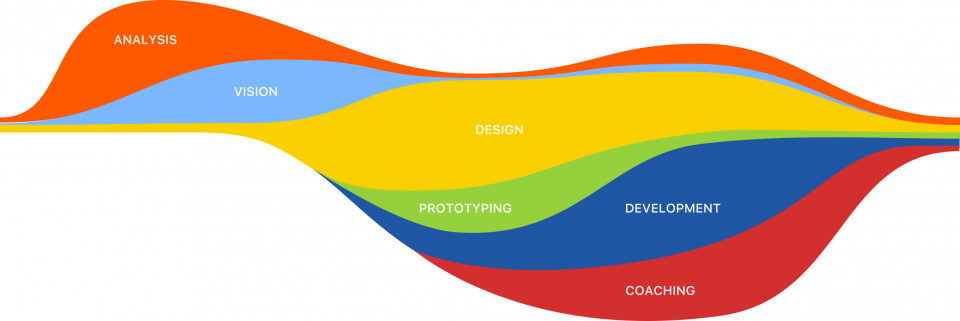How
We empower teamwork and individual skills with solid, resilient methods that range from meticulous research and thigh testing to projects and prototypes.

1. Analysis and Research
We begin by listening carefully to your needs and cross-referencing them with the surrounding environment, by analysing your competitors and the end users of your project. We then organise and manage collaborative workshops that bring together the various stakeholders in your project. And we listen to all of them in order to gauge the range of opportunities for testing every possible scenario.
2. Vision
This step involves picturing, for example, an unfulfilled need or a desire for a better future. We nurture your vision and clearly define your values, story, promises and positioning. This practice allows us to build images that can “crystallize into a well-defined, memorable, self-sufficient, incisive form” – as defined by Italo Calvino in his Six Memos for the Next Millennium.
«The power to bring visions into focus with our eyes closed, to cause colors and shapes to spring forth from an array of black characters on a white page, to thinkthrough images.» – Italo Calvino
2. Design
In this phase we transform vision into something concrete. Contents become part of design / are received by design schemes . They take shape and are developed into structures that act on people and the environment. This is the only way to turn visions into texts, materials, colours, experiences, and sounds in the necessary shape.
«We all, directly or indirectly, create the objects that surround us, and which, in turn, play a role in determining our human condition.» – Tomàs Maldonado
4. Prototyping and testing
To keep real people at the heart of the process, we build working prototypes that are tested in real-life contexts to ensure the project meets the user’s concrete needs. This conversation allows us to identify needs, solve pain points and refine the design before entering the delicate development phases.
«If it works, it’s obsolete.» – Marshall McLuhan
5. Development
This is the production process in which vision, design, prototypes and contents come together in a final concrete artefact. Agile work methods or other specially constructed forms, allow us to handle contents, train and support teams and achieve maximum efficiency.
«When I am working on a problem, I never think about beauty. I think only of how to solve the problem. But when I have finished, if the solution is not beautiful, I know it is wrong.» – R. Buckminster Fuller
6. Coaching / Support / Consultation
We are happy to share the knowledge, skills and passion we have for our craft. Sometimes, projects require teams that have been specifically personalised to meet their needs and those of the client. We use coaching activities to form and accompany external, internal and mixed teams to introduce Agile practices and make the project grow independently.
«The raison d'être of libertarian education [...] lies in its drive towards reconciliation. Education must begin with the solution of the teacher-student contradiction, by reconciling the poles of the contradiction so that both are simultaneously teachers and students.» – Paulo Freire